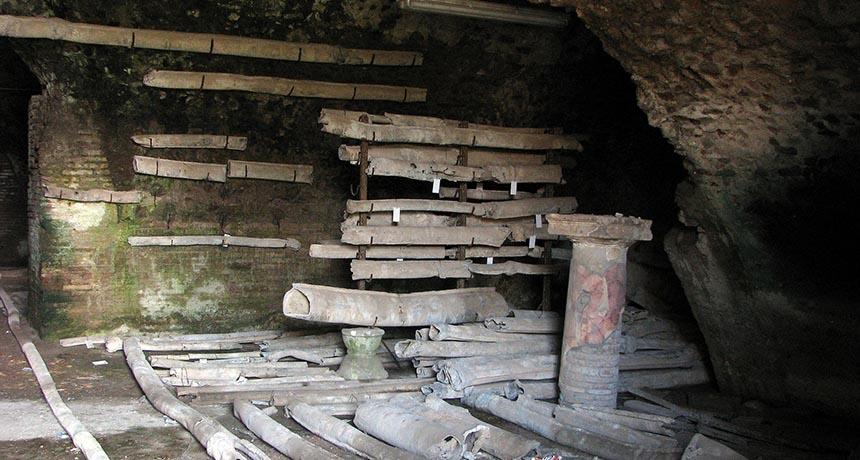Ancient mud documents the legacy of Rome’s lead pipes

Just as modern cities struggle with lead pollution, so may have ancient Rome. And muddy waters preserved the city’s legacy of lead pipes, a new study suggests.
Researchers examined lead levels in dirt drilled from two Roman harbor sites, Ostia and Portus, on the Tiber River. The samples spanned 1000 B.C. to A.D. 1000. Up until around 200 B.C., harbor waters were pristine, but then contamination started to creep in.
The most likely source of lead would have been runoff from pipes in the city’s water system. The timing supports the idea that before aqueducts went in around 300 B.C., Rome’s water system initially employed terra-cotta or wooden pipes that were replaced with lead ones at least a century later. The researchers also link the ups and downs of lead levels to the expansion of the pipe system around 33 B.C. and periods of neglect beginning around A.D. 250.
The lead data could help fill in gaps in written and archaeological records of Rome’s infrastructure by serving as a proxy for urbanization, Hugo Delile of France’s National Center for Scientific Research and his colleagues write August 28 in the Proceedings of the National Academy of Sciences.